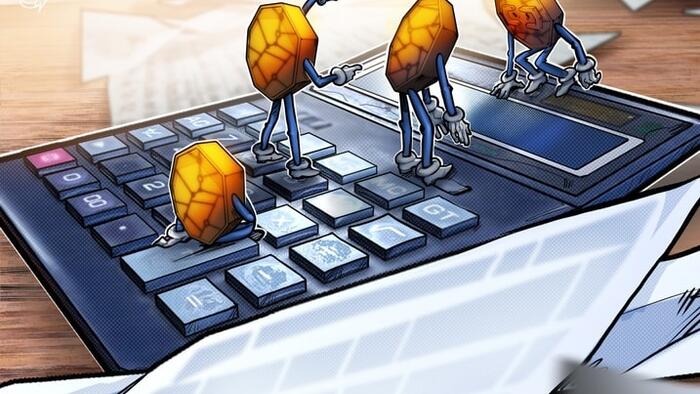


Authored by Onkar Singh via CoinTelegraph.com,
Intrinsic value refers to the actual worth of an asset based on its fundamental characteristics, rather than its market price. For example, in traditional finance, the intrinsic value of a stock is often derived from factors such as earnings, cash flow and growth potential.
In cryptocurrencies, it’s not so straightforward. Since crypto assets are not tied to physical entities or consistent income streams like dividends, assessing their intrinsic value involves a mix of factors — technological, economic and utility-driven. In simple terms, intrinsic value answers the question: What makes this cryptocurrency valuable beyond its price on an exchange?
The intrinsic value of cryptocurrencies is derived from factors such as:
For example, Bitcoin’s BTC$106,649 intrinsic value lies in its fixed supply (21 million coins), decentralized network and security powered by proof-of-work (PoW) mining.
On the other hand, Ethereum derives much of its value from being the backbone of decentralized applications (DApps) and smart contracts.
Did you know? A June 2024 report by Triple A reveals that global crypto ownership rose to 562 million, up from 420 million in 2023, covering 6.8% of the population, with Asia leading the growth.
Let’s move beyond theory and explore three widely-used methods to estimate a cryptocurrency’s intrinsic value.
Ethereum is a vast ecosystem of developers, DApps and DeFi projects. Its value is bolstered by thousands of developers actively building on its blockchain and millions of users engaging with its applications. Specifically, the number of daily active addresses can serve as a proxy for its “network size.”
As of Dec. 13, 2024, according to YCharts, Ethereum’s daily active addresses stand at 543,929. Here’s how you can apply Metcalfe’s law:
Network value = (543,929)2 = 296,086,104,841 or 296 billion units approx (a relative measure, not in USD).
This shows how the network value grows exponentially with the number of users. If Ethereum’s daily active addresses increase, the network’s value increases at an even faster rate.
Bitcoin’s intrinsic value is often anchored to its mining cost.
BNB BNB$718.20 derives its intrinsic value from its role in the Binance ecosystem.
BNB is used to pay transaction fees, participate in token sales and access staking rewards. According to YCharts, as of Dec. 14, the BNB Smart Chain processes about 3.795 million transactions per day. Analysts can calculate the discounted value of these transaction fees over time to estimate BNB’s intrinsic worth.
Here’s how you can use the discounted utility model to estimate BNB’s intrinsic value:
Assuming the average fee per transaction is $0.10, the daily transaction fees total:
3,795,000 × 0.10 = $379,500 or 0.3795 million per day
This translates to an annual transaction fee of:
379,500 × 365 (non-leap year) = $138.52 million per year
To calculate the intrinsic value of BNB over the next 10 years, you could apply a 10% discount rate. Using the discounted value formula below, the total discounted value of BNB’s expected transaction fees over 10 years is $851.13 million.
Here are the discounted values for each year based on $138.52 million annual transaction fees, discounted at a 10% rate for 10 years (inputting values in the above formula):
In the example above, the hypothetical scenario was used to demonstrate how discounted utility models could be applied to estimate the intrinsic value of BNB, assuming transaction fees were constant over time. However, real-world fees vary, and factors such as BNB discounts, account level and transaction types play a crucial role in determining the exact cost.
Fiat currency, like the US dollar or the euro, does not have intrinsic value in the traditional sense. Unlike gold or silver, fiat money isn’t backed by a physical commodity. Its value is instead derived from factors like government decree, trust and its ability to serve as a medium of exchange. Even scholarly literature defines fiat money as “an intrinsically useless unbacked token.”
You might be wondering how fiat currencies work. Let’s find out.
Even without intrinsic value, fiat currency works because of:
The debate over whether fiat or crypto has “real” value often highlights the following differences:
To further understand the above distinction, let’s interpret it through the lens of the definitions provided in the Oxford Handbook of Value Theory (p.29), which defines intrinsic value as “what is valuable for its own sake, in itself, on its own, in its own right, as an end, or as such.” In contrast, extrinsic value is “what is valuable as a means, or for something else’s sake.”
Based on the above definitions, fiat currencies have no intrinsic value; their worth comes from government backing and legal frameworks (extrinsic value). Bitcoin, however, possesses qualities that make it independently valuable through its scarcity (21 million cap), decentralization and utility as a trustless, peer-to-peer network.
While fiat relies on centralized trust, Bitcoin’s value stems from its unique, self-sustained properties, sparking debate about its intrinsic worth.
Did you know? The 2008 global financial crisis shattered trust in the traditional banking system. It exposed reckless lending practices, flawed regulations and the fragility of institutions once deemed “too big to fail.” This erosion of trust fueled the search for alternatives, eventually paving the way for Bitcoin’s creation in 2009 as a decentralized, trustless financial system.
Understanding intrinsic value helps investors separate strong projects from speculative ones. During the 2017 ICO boom, thousands of tokens were launched with little to no intrinsic value. Many collapsed because they lacked the fundamental characteristics — utility, security or scarcity — to sustain long-term demand.
By focusing on intrinsic value, you can make informed decisions and avoid falling for hype. For example, Bitcoin remains dominant because it demonstrates strong intrinsic value through scarcity, network effects and utility, while many other tokens fade away.
Finally, the key to understanding the intrinsic value of crypto versus fiat lies in grasping the correct meaning of intrinsic versus extrinsic value and how it applies to each.
